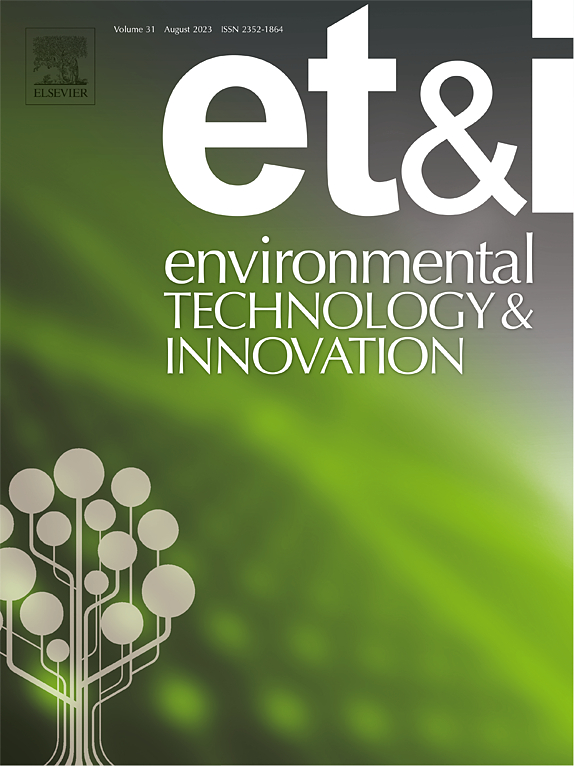Adding urease inhibitor into nitrogen fertilizer of hydrothermal aqueous phase decreases NH3 volatilization but may inhibit lettuce root development
IF 6.7
2区 环境科学与生态学
Q1 BIOTECHNOLOGY & APPLIED MICROBIOLOGY
引用次数: 0
Abstract
Since hydrothermal aqueous phase (HAP) contains abundant nutrients and humic-like substances, it is developed as nitrogen (N) fertilizer to improve plant growth and soil quality. However, significant NH3 volatilization is a major drawback in dryland soil. To solve this problem, a compound fertilizer of HAP and urea was modified with various dosage (0.25 % - 5.0 %) of urease inhibitor N-(n-butyl) thiophosphoric triamide (NBPT). The NH3, N loss, and lettuce growth were evaluated in parallel soil column and pot experiments. Results showed that increasing NBPT dosage increased soil dissolved organic N (DON) and ON while decreased NH4-N, NH3, N loss, urease activity, and ureC. NBPT successfully inhibited ammonification. Increasing NBPT dosage increased NO3-N but decreased PAO and AOA. The utilization rate of metabolic substrate (NH4-N) was more important for forming NO3-N, as evidenced by the negative correlation of NO3-N and NH3. The DON from HAP included N-heterocyclic compounds, which are toxic for nitrifiers. The toxic DON also significantly decreased root dry weight by 22.31 % when 5.0 % NBPT was added. The optimal additive dosages were 0.5 % and 2.0 % in the column and pot experiments, respectively, which decreased NH3 and N loss by 45.38 % and 32.08 %. Further increasing NBPT dosage no longer decreased N loss but did harm to plant root. Therefore, this study demonstrated that an appropriate addition of NBPT to HAP fertilizer can effectively reduce ammonia volatilization and N loss. The innovative technique would promote the utilization of HAP resource within the context of sustainable dryland agriculture.
求助全文
约1分钟内获得全文
求助全文
来源期刊

Environmental Technology & Innovation
Environmental Science-General Environmental Science
CiteScore
14.00
自引率
4.20%
发文量
435
审稿时长
74 days
期刊介绍:
Environmental Technology & Innovation adopts a challenge-oriented approach to solutions by integrating natural sciences to promote a sustainable future. The journal aims to foster the creation and development of innovative products, technologies, and ideas that enhance the environment, with impacts across soil, air, water, and food in rural and urban areas.
As a platform for disseminating scientific evidence for environmental protection and sustainable development, the journal emphasizes fundamental science, methodologies, tools, techniques, and policy considerations. It emphasizes the importance of science and technology in environmental benefits, including smarter, cleaner technologies for environmental protection, more efficient resource processing methods, and the evidence supporting their effectiveness.
 求助内容:
求助内容: 应助结果提醒方式:
应助结果提醒方式:


